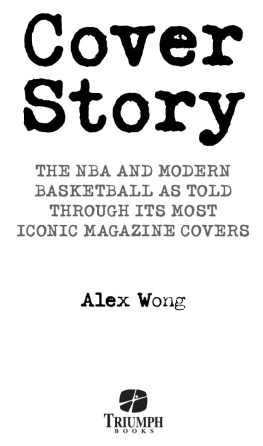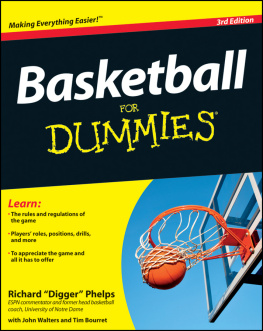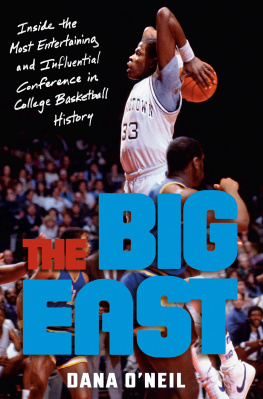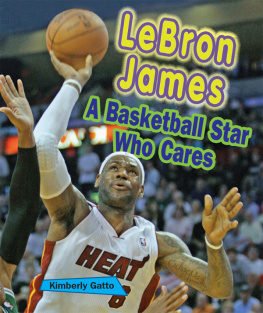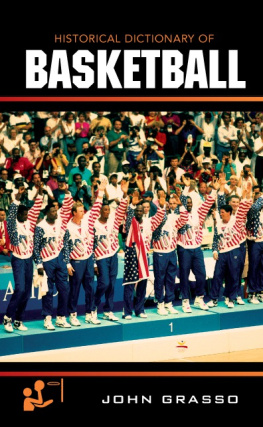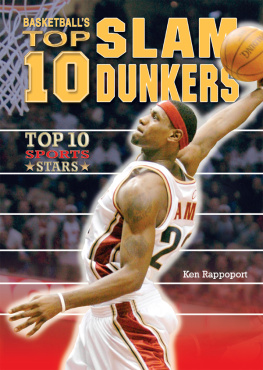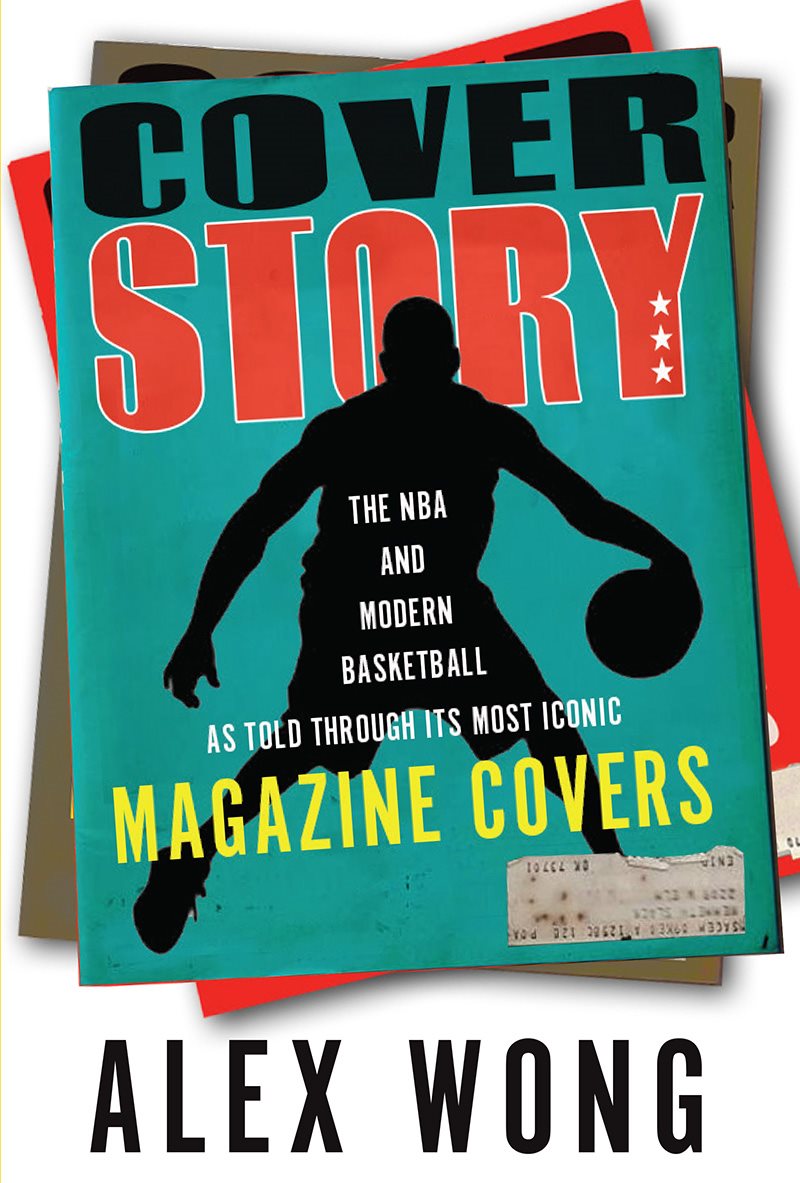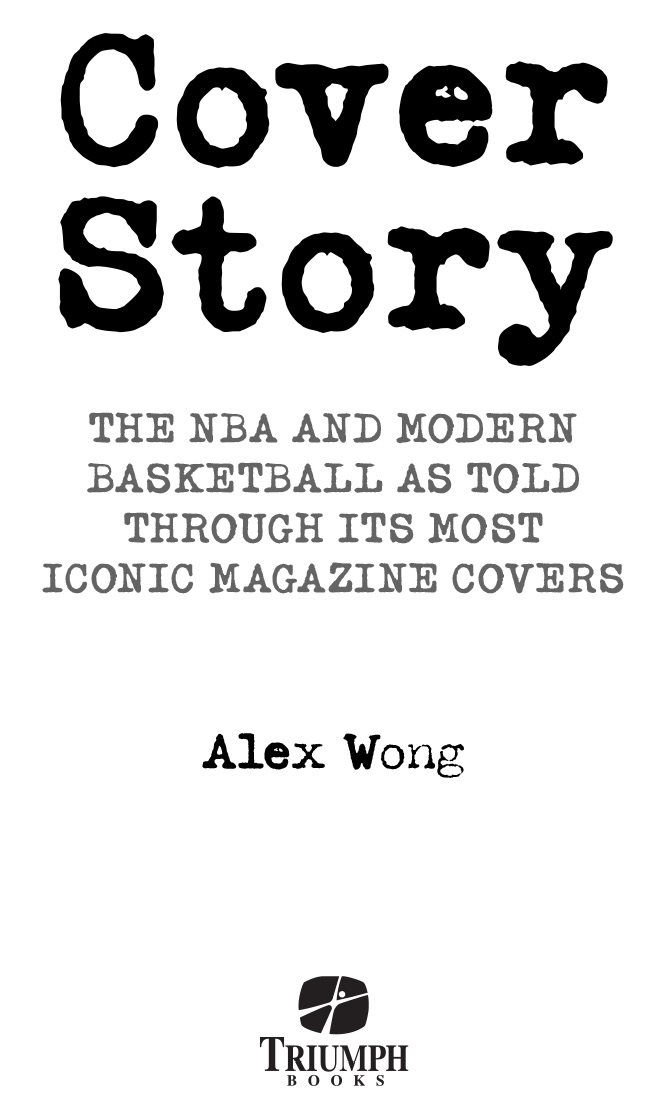
To Mom and Dad. Thank you for everything.
Contents
Foreword by Russ Bengtson
There was a decade-long stretch when magazine covers were among the most important things in my life. It started in 1994 with a late-night grocery shopping trip. I was living in Delaware at the time. A magazine with a neon orange logo jumped off the newsstand. It was called SLAM . They were the IN YOUR FACE BASKETBALL MAGAZINE. Larry Johnson of the Charlotte Hornets was on the cover.
This was new.
I pulled it off the rack and started flipping through it.
Hold up.
There was a whole section on sneakers?
I wanted in.
I bought it and started hitting up the editors on the masthead while waiting for the next issue to come out. I published my first piece with SLAM less than a year later. I moved to New York and became their senior editor two years later. I was SLA M s third editor-in-chief three years after joining the magazine.
All because a magazine cover caught my eye when I was out looking for Life cereal and kalamata olives late one night.
It changed my entire life.
A decade and a half later I look back at my time at SLAM in terms of covers. My first cover story was Allen Iversons SOUL ON ICE cover. My first cover shoot was when Jonathan Mannion shot Kevin Garnett at his home in Minnesota. I still remember KG playing an advance copy of Mobb Deeps Murda Muzik on repeat so he could memorize the lyrics. My first issue as editor-in-chief was when Chris Webber and Jason Williams appeared on the cover with the caption DOUBLE PLATINUM. It was meant to be a split cover with Stephon Marbury and Keith Van Horn on the East Coast but we scrapped it after the New Jersey Nets got off to such an abysmal start to the season. (I still hear about the GENERATION NETS/CHAMPS BY 2001 cover line by the way, which was kinda, sorta vindicated when the Nets finally made the Finals in 2002.)
The SLAM covers were as important to the players as they were to the readers. It wasnt like being named to an All-Star team or getting a signature shoe, but it was close (no NBA player ever got a SLAM cover bonus written in their contract to my knowledge). Gary Payton didnt talk to me because it wasnt a cover story. Antoine Walker asked to be on the cover so many times I ended up giving him a Cover Story headline (though he didnt make the cover for the story).
We treated magazine covers like posters. An ice sculptor in San Antonio made a throne for Tim Duncan. Someone in New York created a broken backboard and rim for Kenyon Martin. We put Shaq and Kobe on the cover before their first title. I remember wanting them to point at their ring finger on the cover. Shaq did it. And the Lakers won three in a row. Thank you, Diesel.
At their best, magazine covers are talked about years after the pages inside are forgotten. Remembered or not, all of them were of a time and for a time. Once accepted, they were an invitation that could lead you anywhere.
Russ Bengtson
Editor-in-Chief, SLAM
1999-2004
Part 1: A Star Is Born
Intro/North Carolina Is No. 1
I grew up when Sports Illustrated covers captured an entire era of sports. The cover photos celebrated the best athletes in the world, or sometimes exposed us to the darker side of sports. The cover stories became the definitive text on all things sports. SLAM came and invented a new way of publishing a sports magazine, creating a community of the worlds most hardcore basketball fans. Rolling Stone inspired their photography. The Source inspired their voice. Vibe inspired their photo layouts. Publications like Sports Illustrated for Women , Source Sports , and ESPN the Magazine debuted on newsstands toward the end of the 1990s. I remember so many of these magazines piling up along the windowsill in our family homes kitchen.
These magazines are the main characters of this book.
I set out to cover a period between 1984 to 2003. This book isnt a complete documentation of an entire era, but instead it is a selection of cover stories that I hope together can provide a snapshot of a golden age of publishing and a period of transformative growth for the sport of basketball.
The magazine covers selected for this book mattered.
Most of them still matter today.
The writers, editors, creative directors, photographers, publishers, fact-checkers, assistants, sales reps, and everyone else involved in putting together a magazine (and if theres anything Ive learned from writing this book, its that every issue takes a village) are the people who spent the time and effort making these magazine covers matter. I conducted over 100 interviews with these people who were involved firsthand and also talked to those who helped shape the cover stories and their larger themes.
A Sports Illustrated managing editor told me during my research that he couldnt imagine the cover not being the most enjoyable part of putting a magazine together. I felt this same kind of passion during all the interviews I conducted for this book. A lot of fond memories were shared with me. Some embarrassing ones too. Once you start talking to enough people about magazine covers, you realize the beauty in how two people can work on the same cover but have completely opposite feelings about them. Every magazine cover is perceived in a particular way by the general public, but those feelings arent always shared by the people who created them.
This book isnt just a collection of cover stories. The chapters ahead explore how a series of decisions influenced an entire era of publishing and shaped the basketball narratives of a whole generation (or two) of players. This book is about understanding how these magazine covers shaped an entire era. Thats the true power of magazine covers.
Every chapter is centered around a specific magazine cover, and in some cases, several covers exploring a larger idea. Together, you will read about a period of modern basketball which is near and dear to my heart.
Ive divided the book into four different sections.
The first section is called A Star Is Born , referencing a 1984 Sports Illustrated cover featuring Michael Jordan.
This section will explore Sports Illustrated through the lens of Jordans career with the Chicago Bulls, which included three championships, a one-year baseball interlude, and another three championships. When did Sports Illustrated become the highest honor for any athlete in the world? What is the cover jinx? Who was the first basketball phenom to appear on the cover? How did so many of Jordans defining moments end up on the cover? Why did one cover line end his relationship with Sports Illustrated? What happened when Dennis Rodman took a Sports Illustrated writer on a four-day, three-state trip? What happens when the most famous athlete in the world decides to stop talking to your magazine?
The second section, titled The In Your Face Basketball Magazine , references SLA M s slogan.
This section is an in-depth look at SLA M s golden era. We will explore how a one-page newsletter named The Source and a rookie named Shaquille ONeal set the blueprint for selling hip-hop on newsstands and inspired the most influential basketball publication ever. This section will tell the behind-the-scenes stories of some of the most iconic SLAM covers of all-time, including the 1996 Draft class cover, Jonathan Mannions cover shoot with Stephon Marbury and Kevin Garnett, and the defining cover photo of Allen Iversons career, along with other SLAM covers you might have never thought about.

